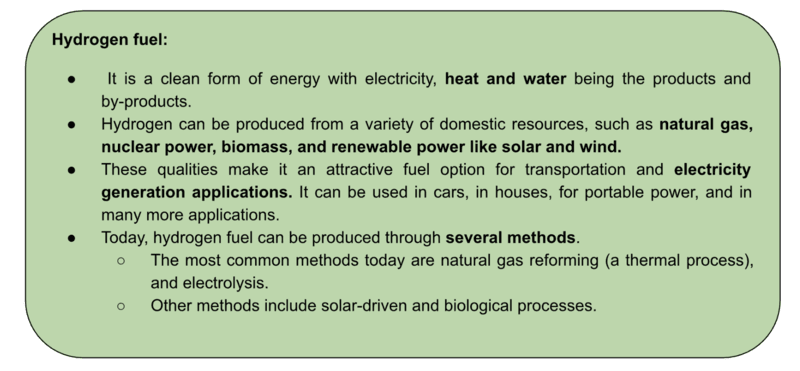GS Paper III
News excerpt
Rolls-Royce announced the start of a new set of tests aimed at using hydrogen to power commercial airliners.
More details on the news:
- Rolls-Royce and its partner EasyJet will develop hydrogen combustion engine capable of powering a range of aircraft, including those in the narrowbody market segment, from the mid-2030s onwards.
- The latest tests of using hydrogen to power commercial airliners, aimed at proving aerospace cryogenic liquid hydrogen pump systems, are being carried out at Rolls-Royce’s facility at Solihull, UK.
- These tests will address the key engineering challenge such as of taking low-pressure liquid hydrogen, chilled below -250°C, and pressurising it so that it can then be pumped into an engine to be combusted.
- Rolls-Royce has already set a world record when tests on a Pearl 700 engine, running on 100 % hydrogen, proved the fuel can be combusted at conditions that represent maximum take-off thrust.
- The Solihull tests now mark the start of understanding the fuel delivery element.. Initial tests have focused on chilling the pump and understanding its behaviour at cryogenic conditions.



Challenges before hydrogen combustion engines
No modern operator has yet carried out a flight-test on a combustion engine running on 100% hydrogen, although several have carried out tests on aircraft running on hydrogen fuel cells, the most recent being Hy2Fly’s three-hour flight. Several challenges remain to be addressed before hydrogen combustion engines become commercially viable which are as follow:
- Hydrogen is highly flammable, making it difficult to store and transport safely.
- The infrastructure needed to produce, store, and distribute hydrogen is expensive and still under development.
- The efficiency of hydrogen production is low.
- Most hydrogen is produced from natural gas, which emits large amounts of carbon dioxide.
- Hydrogen will be difficult and expensive to incorporate into airline operation, on account of its poor round-trip efficiency and the complexity of storing and loading the fuel.
Conclusion:
Hydrogen fuel and hydrogen combustion engines for airlines are the future of the transportation and energy sector. In this sector the recent Rolls-Royce and EasyJet development of a hydrogen combustion engine for airlines, promising cleaner, more efficient travel is the one of the promising developments but It has some challenges including safety, infrastructure, and production efficiency. However, the recent tests mean the combustion element of the hydrogen programme is now well understood, while work continues on systems to deliver the fuel to the engine and integrate those systems with an engine.
Prelims PYQ
Q. With reference to ‘fuel cells’ in which hydrogen-rich fuel and oxygen are used to generate electricity, consider the following statements : (UPSC 2015)
1. If pure hydrogen is used as a fuel, the fuel cell emits heat and water as by-products.
2. Fuel cells can be used for powering buildings and not for small devices like laptop computers.
3. Fuel cells produce electricity in the form of Alternating Current (AC).
Which of the statements given above is / are correct?
(a) 1 only
(b) 2 and 3 only
(c) 1 and 3 only
(d) 1, 2 and 3
